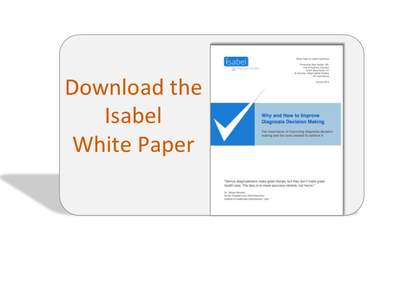- Privacy Policy
- Terms & Conditions
- Contact us
- ©Isabel Healthcare 2025
Narcolepsy: Causes, Symptoms, Treatments | Isabel Healthcare
What is Narcolepsy?
Narcolepsy is a sleep disorder defined as recurrent attacks of daytime sleepiness. It is a chronic neurological condition caused by the brain’s inability to regulate sleep-wake cycles normally. The condition usually occurs with a triad of:
Cataplexy – sudden reduction or loss of muscle tone which is triggered by strong emotions, but the person maintains consciousness. This may cause a person to fall, or it could manifest with only partial tone loss such as head nod. It can be linked to strong emotions such as laughter or anger.
Sleep Paralysis – inability to move when falling asleep or awakening, which is often frightening for the patient. It can also be accompanied by hallucinations. The paralysis can be relieved by sensory stimuli such as touching or speaking to the person.
Hypnagogic Hallucinations – vivid hallucinations which occur at sleep initiation or when wakening.
Who is affected?
80% of Narcolepsy patients have their first symptoms between the ages of 15 – 35 years of age and both sexes are affected equally. Prevalence of narcolepsy is 20 to 60 cases per 100,000 and the prevalence of narcolepsy with cataplexy is 30 to 50 per 100, 000 in European populations.
What is the cause of Narcolepsy?
The cause of narcolepsy is unknown but probably involves multiple factors interacting together to cause neurological and sleep dysfunction. Theories put forward have suggested a neurodegenerative disorder resulting from loss of neurons containing hypocretin in the hypothalamus and may be autoimmune. 85% of patients with narcolepsy and cataplexy have low hypocretin in CSF. There may be possible involvement of immune system and environmental influences.
What symptoms occur in Narcolepsy?
-
excessive daytime sleepiness for at least 3 months
-
involuntary episodes of falling asleep
-
cataplexy (most episodes triggered by strong emotions such as surprise or fear)
-
sleep paralysis
-
hypnagogic hallucinations (maybe visual and can be confused with partial epilepsy)
-
disturbed nocturnal sleep (from frightening dreams and/or increased body movements during sleep)
How is Narcolepsy diagnosed?
-
The person must have excessive daytime sleepiness for at least 3 months
-
Confirm the diagnosis by using sleep analysis tests such as nocturnal polysomnography followed by multiple sleep latency testing
-
Encourage the patient to keep a sleep diary or to complete an Epworth Sleepiness questionnaire
Isabel PRO differential for hypersomnia
-
Obstructive sleep apnea – caused by obstruction to the breathing and symptoms include loud snoring, noisy breathing and night sweats.
-
Central sleep apnea – where you stop breathing during sleep
-
Depression – symptoms include speaking more slowly than normal, change in appetite or weight, low mood, sadness and feeling anxious
-
Restless leg syndrome – cramping in calf’s or legs and tingling or burning in legs.
Treatment for Narcolepsy:
There is currently no available medications which allow people diagnosed with Narcolepsy to maintain a consistent level of alertness. The main symptoms of excessive daytime sleepiness and cataplexy can be controlled with medications. It is therefore recommended that medications should be used in conjunction with other behavioral strategies. Patient support groups may also be beneficial. 20 minute naps can also be used as behavioral mechanism. Sedatives should be avoided. Safety precautions should be used with people driving; people who have untreated narcolepsy symptoms are involved in car accidents 10x more frequently than the general population. When appropriate medication therapy has been commenced the figure for accident rates reduces to normal levels.
First line medications include:
-
Modafinil (Provigil)
-
Armodafinil
-
Sodium oxybate (Xyrem)
-
Selegiline (Eldepryl)
Patient Support Groups:
Brain Resources and Information Network (BRAIN) (http://www.ninds.nih.gov)
National Sleep Foundation (http://sleepfoundation.org/)
Wake Up Narcolepsy (http://www.wakeupnarcolepsy.org/)
Narcolespy Network Inc (http://narcolepsynetwork.org/)
Narcolepsy UK (http://www.narcolepsy.org.uk/)
Have you downloaded our whitepaper on diagnostic decision support?

Mandy Tomlinson
Mandy has worked for Isabel Healthcare since 2000. Prior to this, she was a Senior Staff Nurse on the Pediatric Infectious disease ward and high dependency unit at one of London's top hospitals, St Mary’s in Paddington which is part of Imperial College Healthcare NHS Trust. Her experience in the healthcare industry for the past 33 years in both the UK and USA means she's a vital resource for our organization. Mandy currently lives and works in Scottsdale, Arizona.
Subscribe Here!
Recent Posts
Isabel DDx Companion with ChatGPT Integration - to help you diagnose even faster
At Isabel Healthcare, we’ve always been driven by one goal: to make clinical reasoning faster,..Virtual Triage: Do more questions lead to better patient outcomes?
One of the common misconceptions related to virtual triage / symptom checker tools is that the more..List Of Categories
- Differential Diagnosis Decision Support
- Differential diagnosis
- Symptom Checker
- Symptoms
- Medical Error
- Patient Disease Information
- Disease
- Clinical Decision Support
- Diagnostic Decision Support
- Isabel 1 Minute Read
- Diagnosis Error
- Diagnosis Skills Cases
- Healthcare Informatics
- Clinical Reasoning
- Evidence-based Medicine
- Medical Education
- Patient Engagement
- Symptom Triage
- Nurse Practitioner Education
- Nursing Decision Support
- Partnership
- Public Health
- COVID-19
- EHR
- Patient Empowerment
- Patient Safety
- rare disease

Start your FREE Trial today
Try the Isabel Pro DDx generator for 30-days - no payment card details required.




